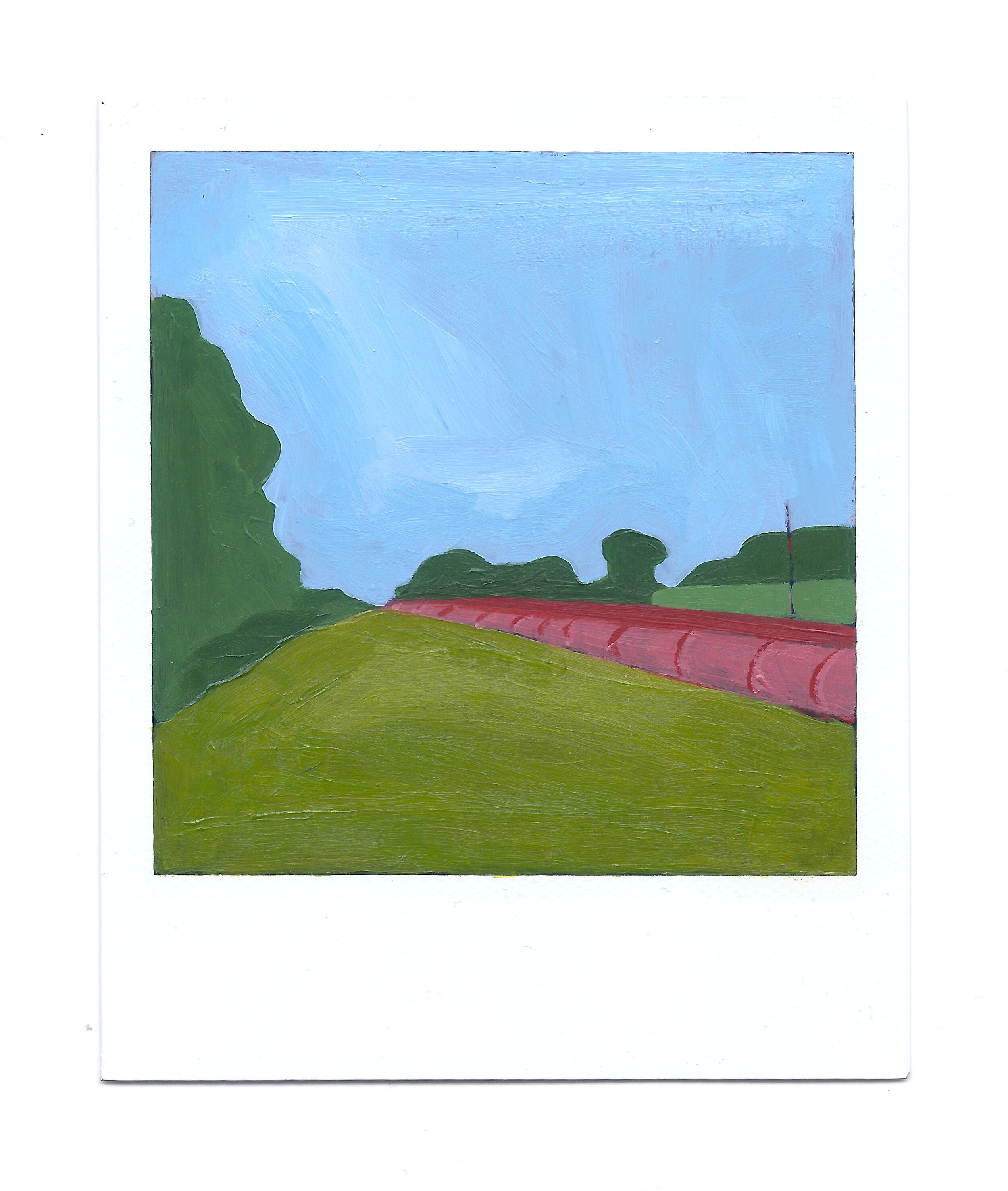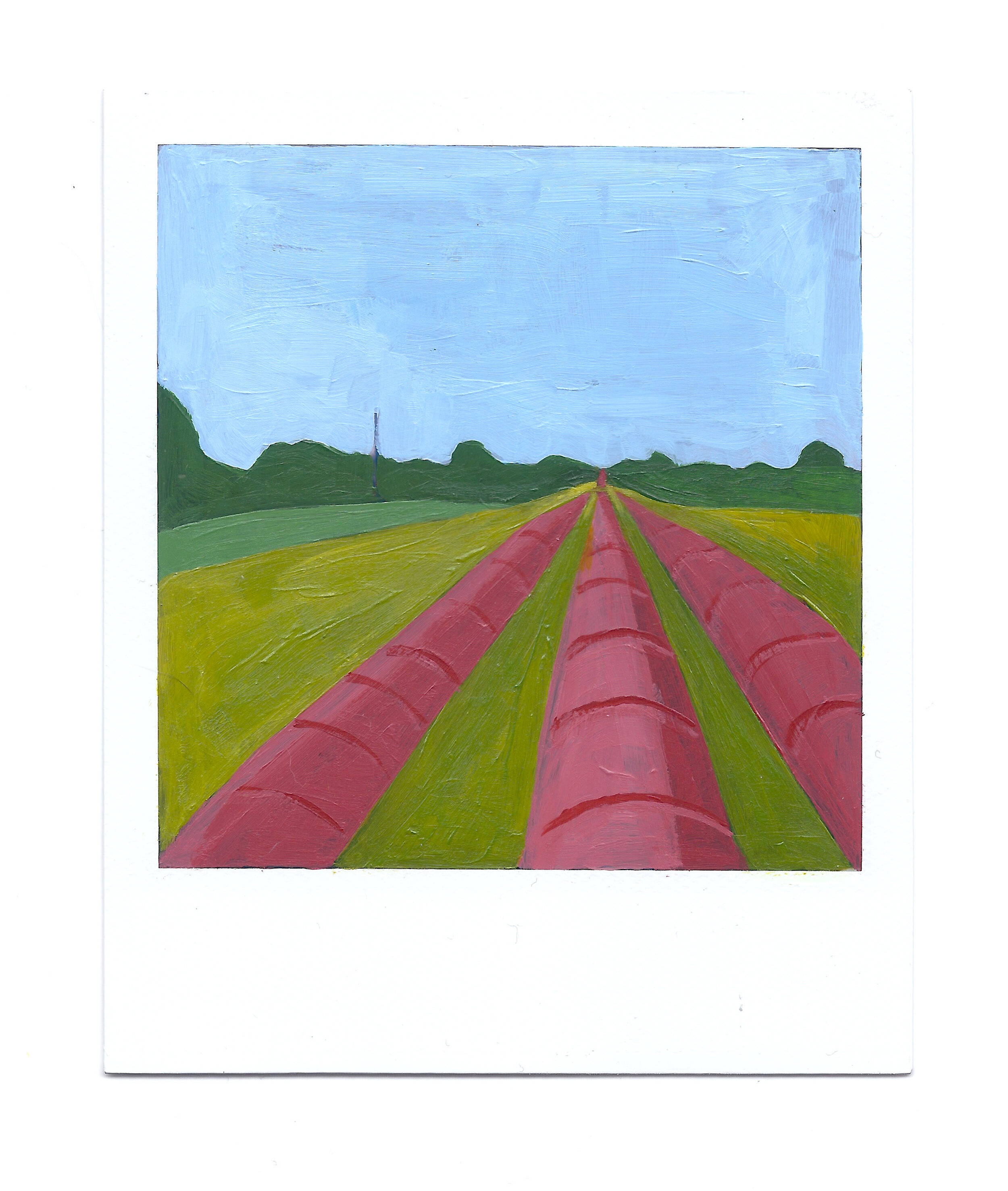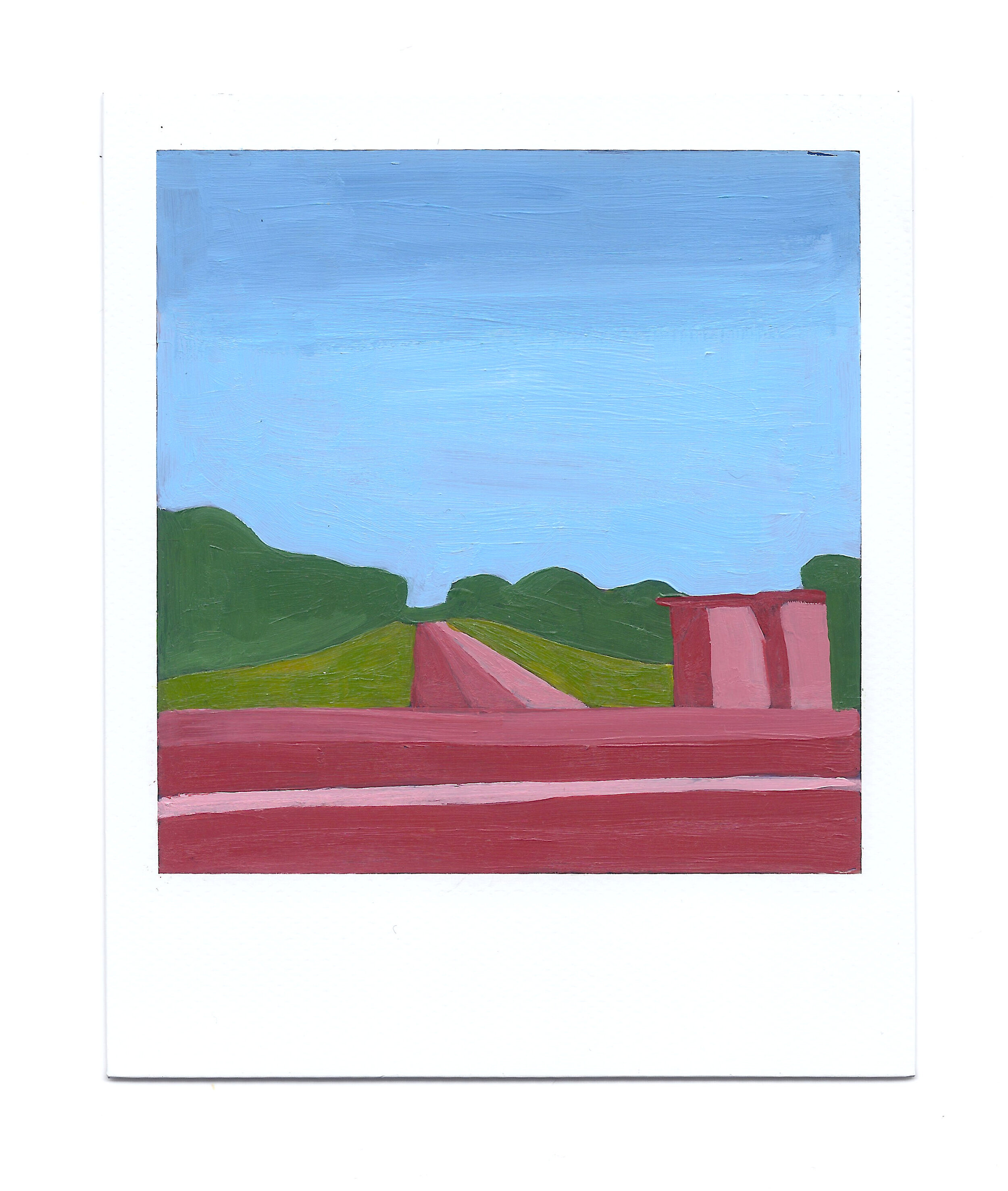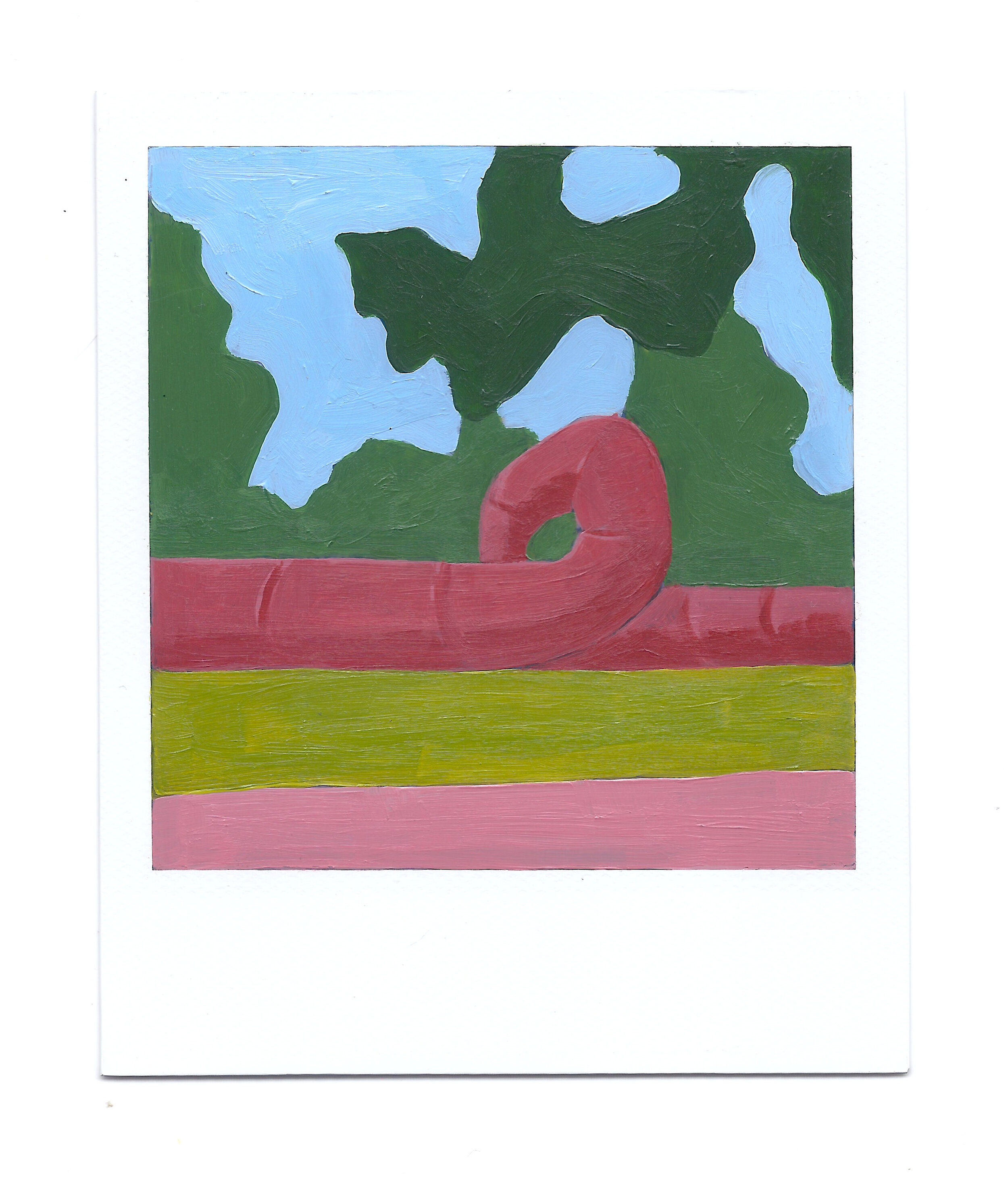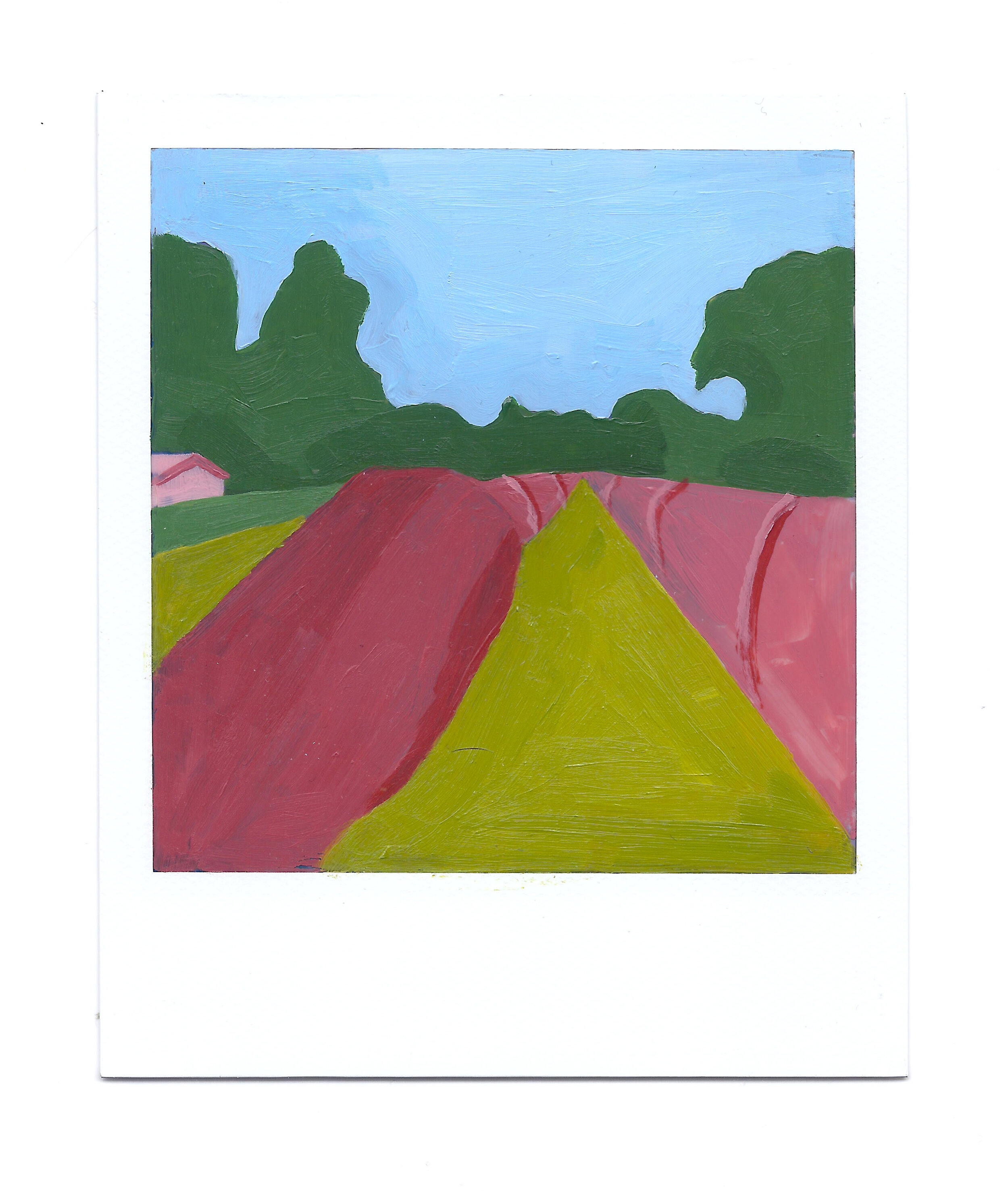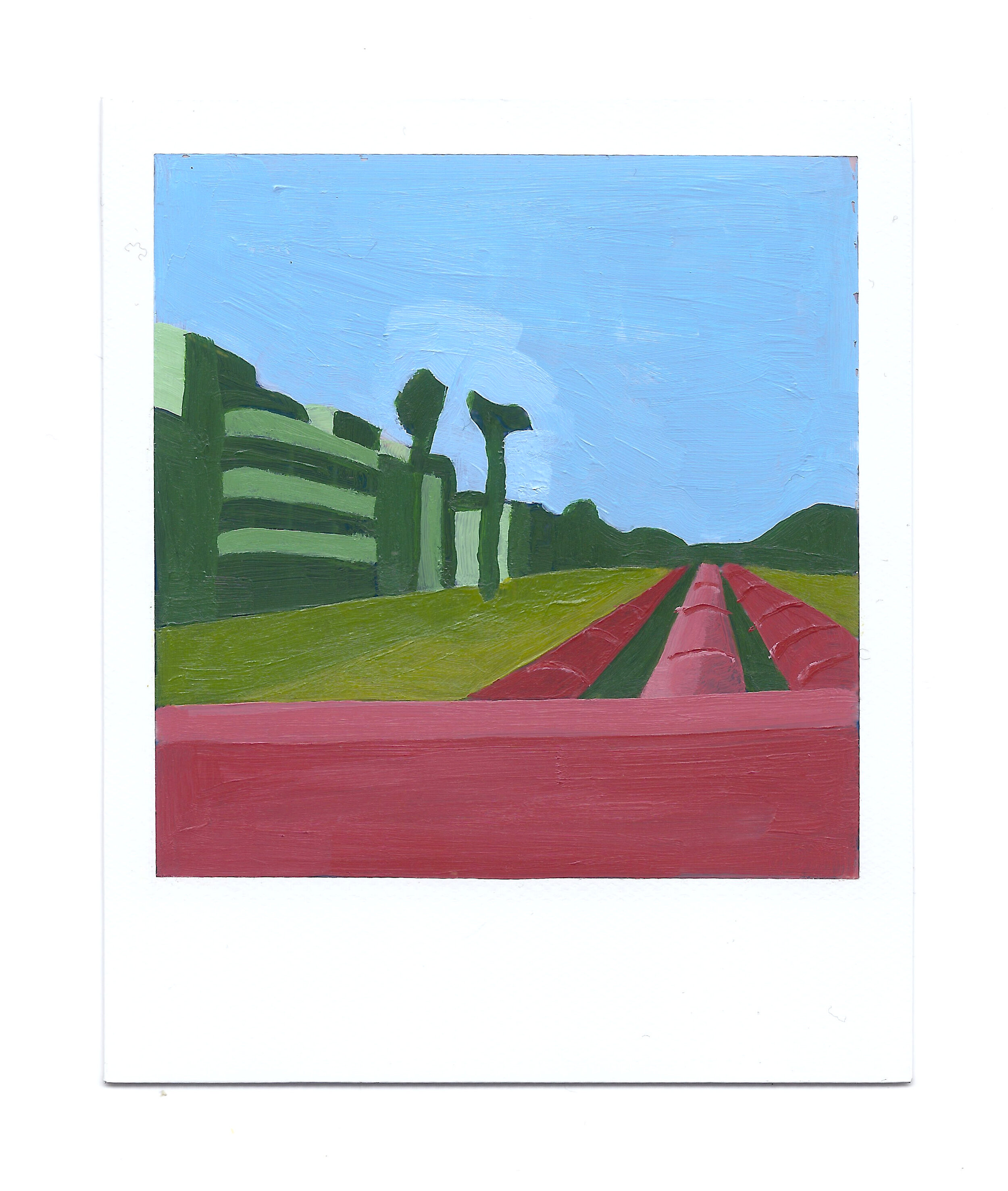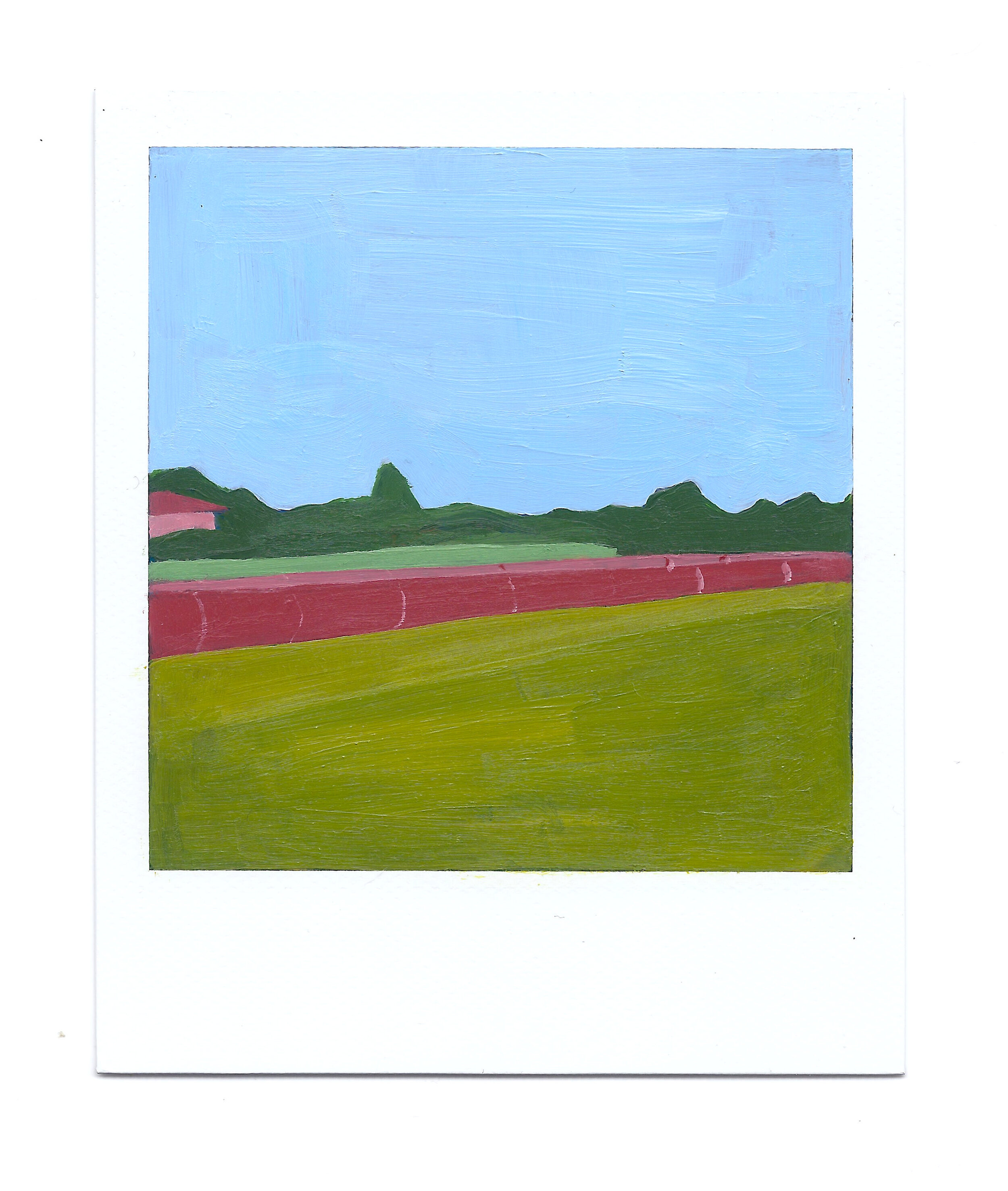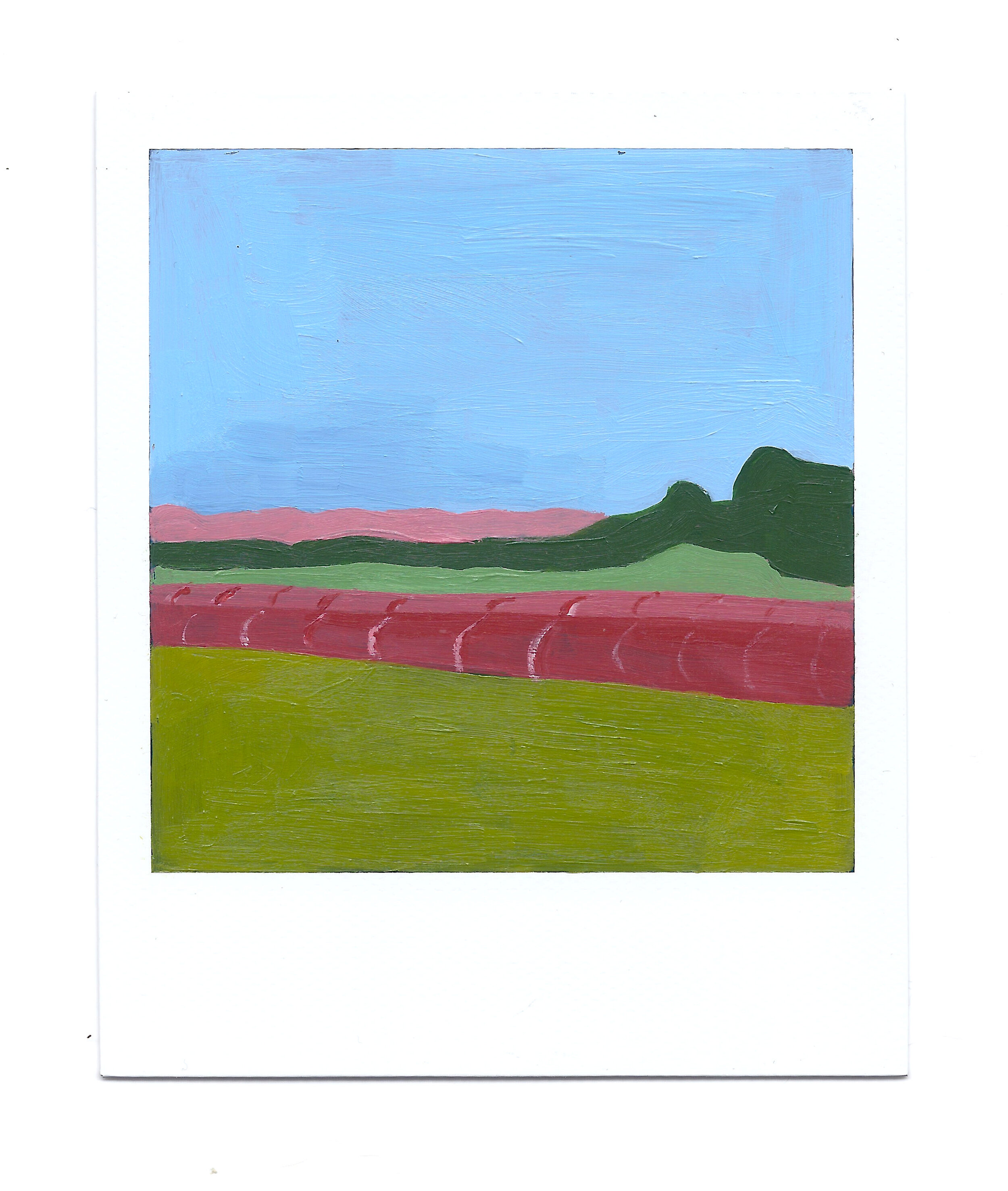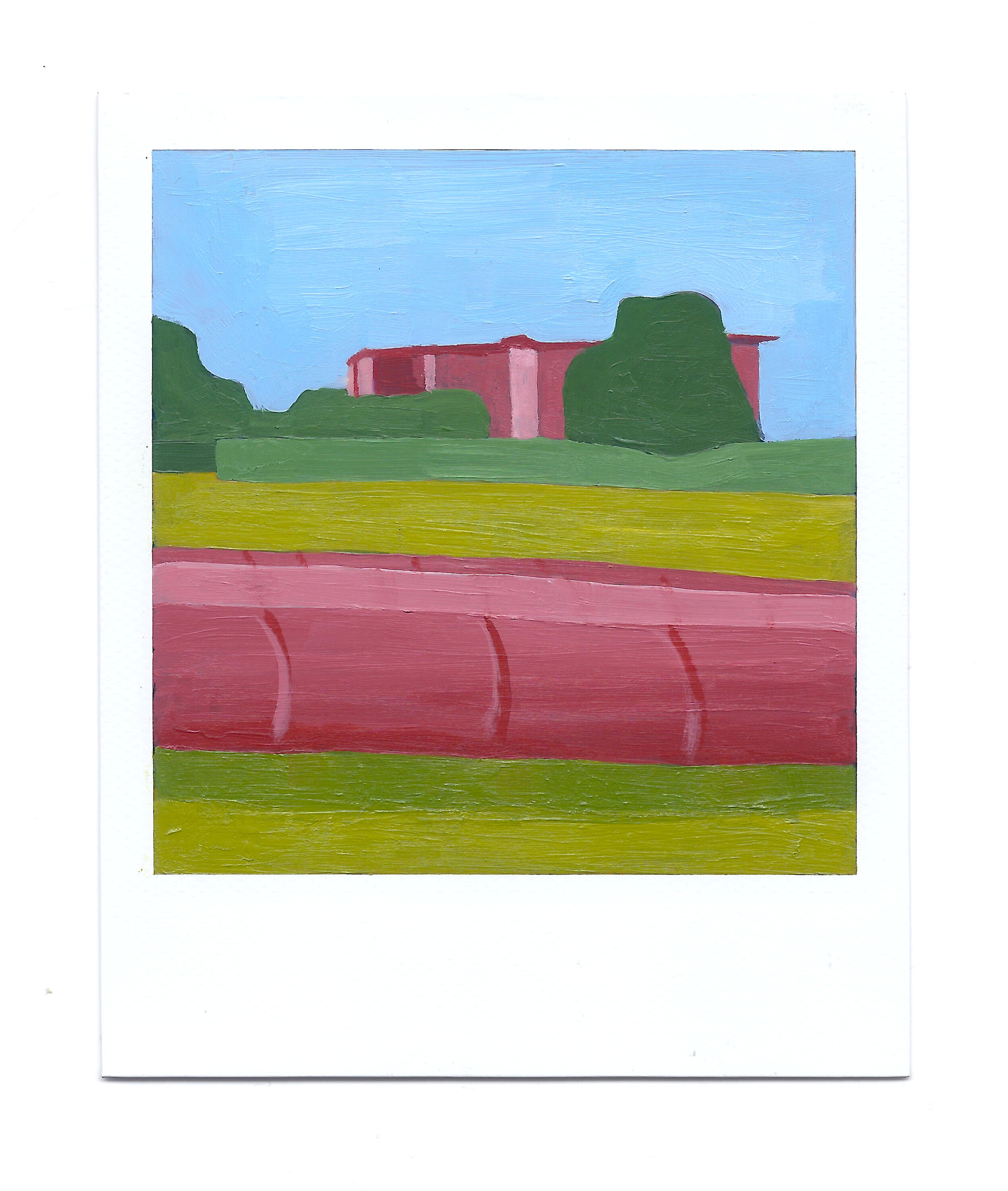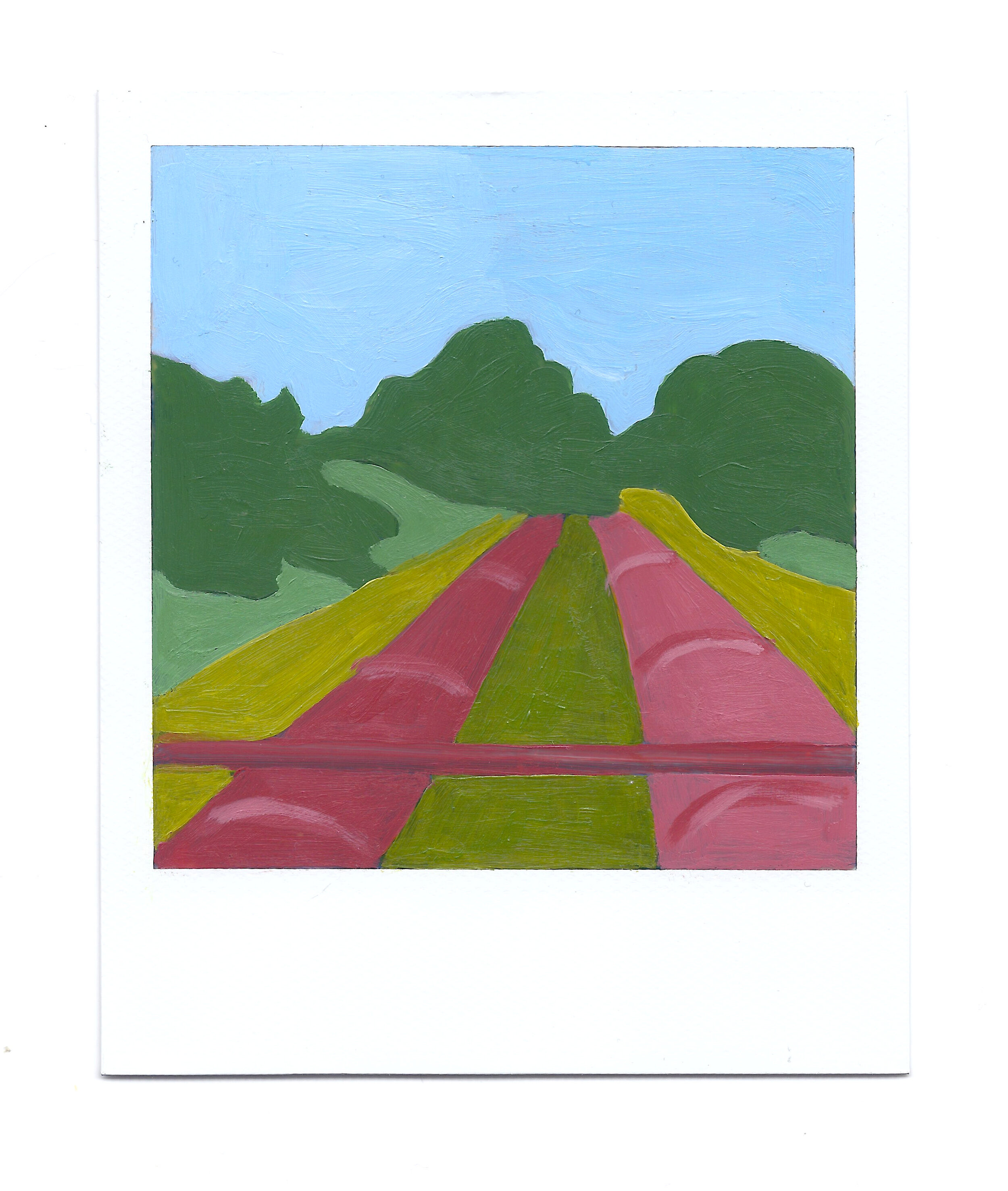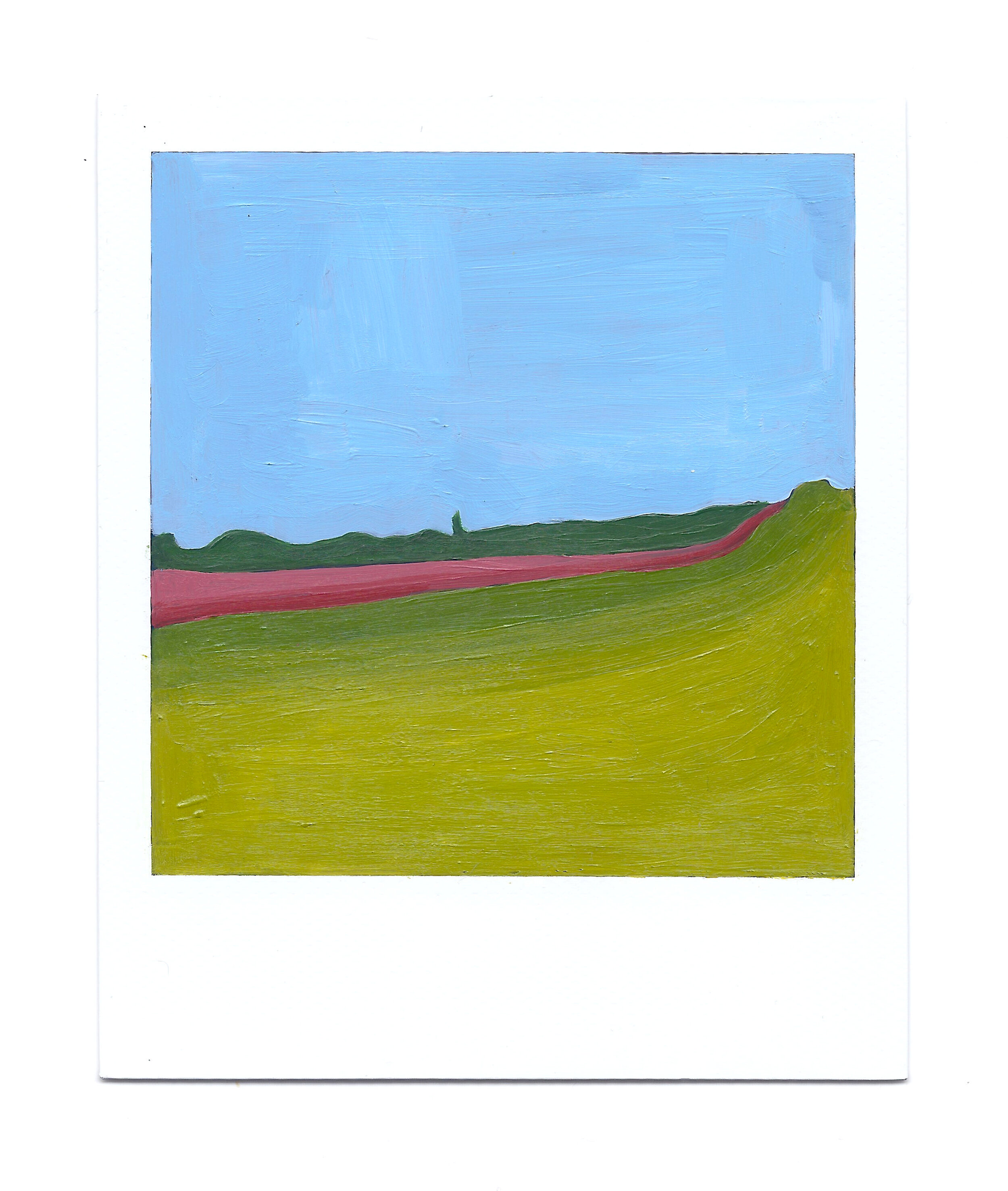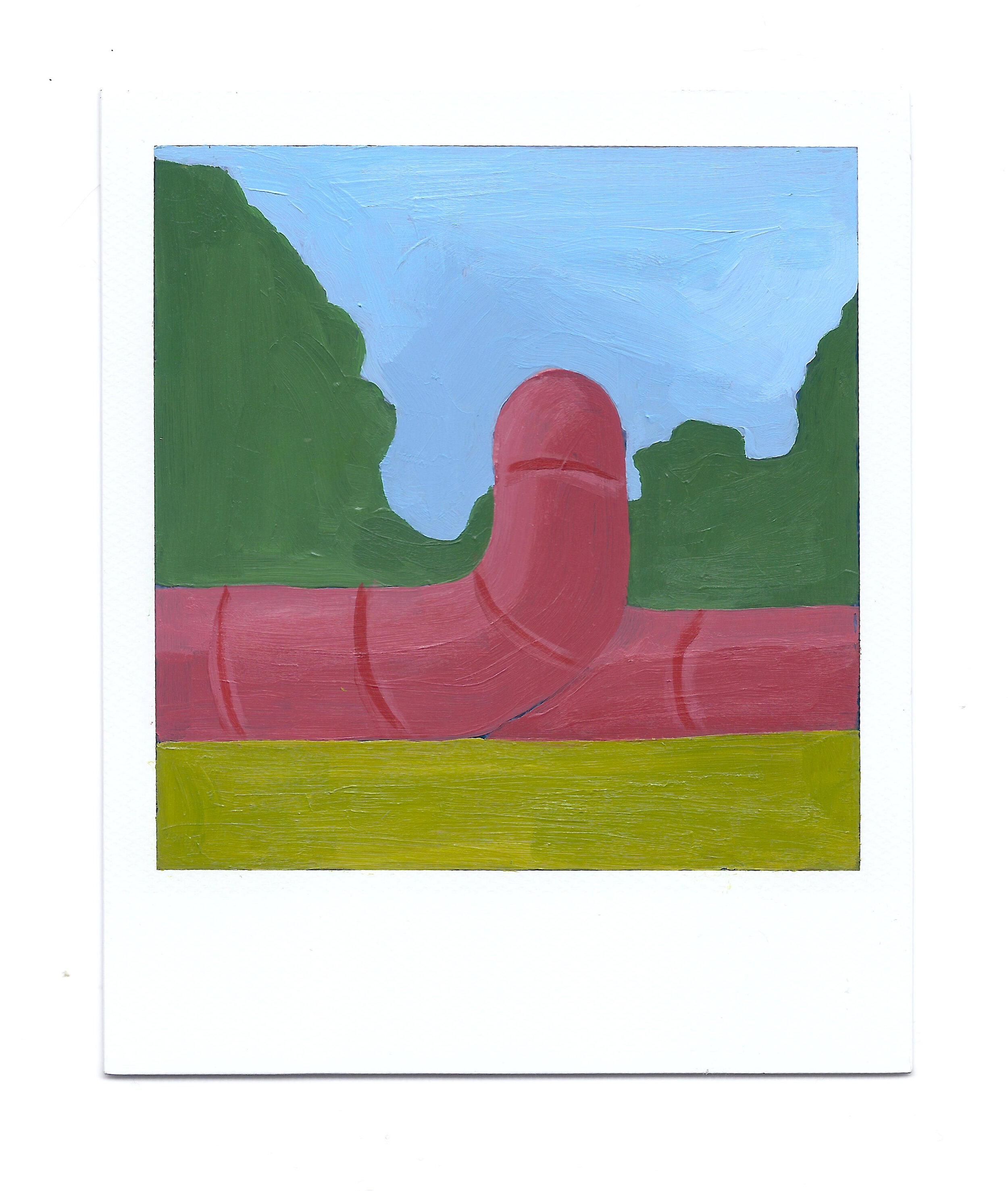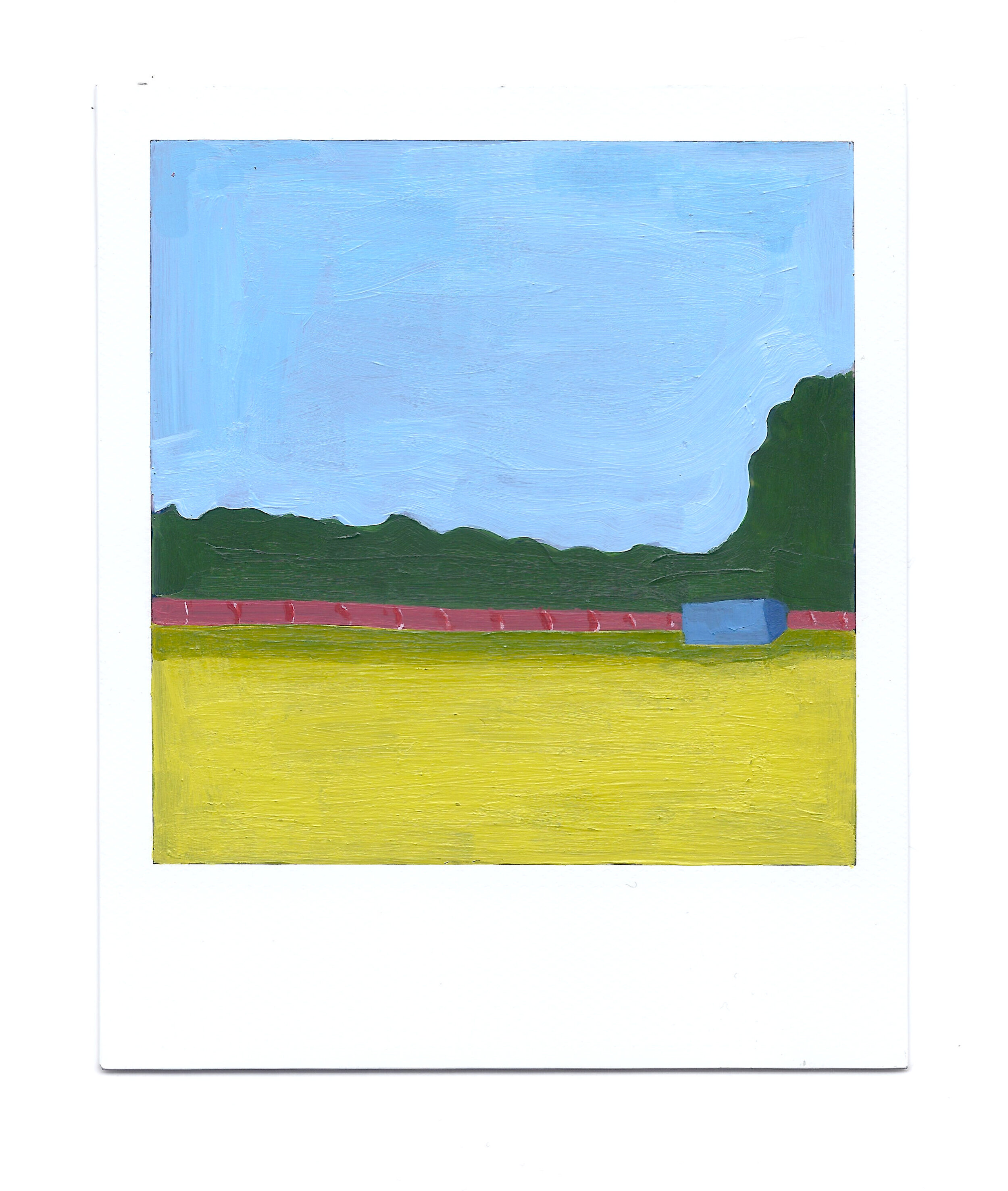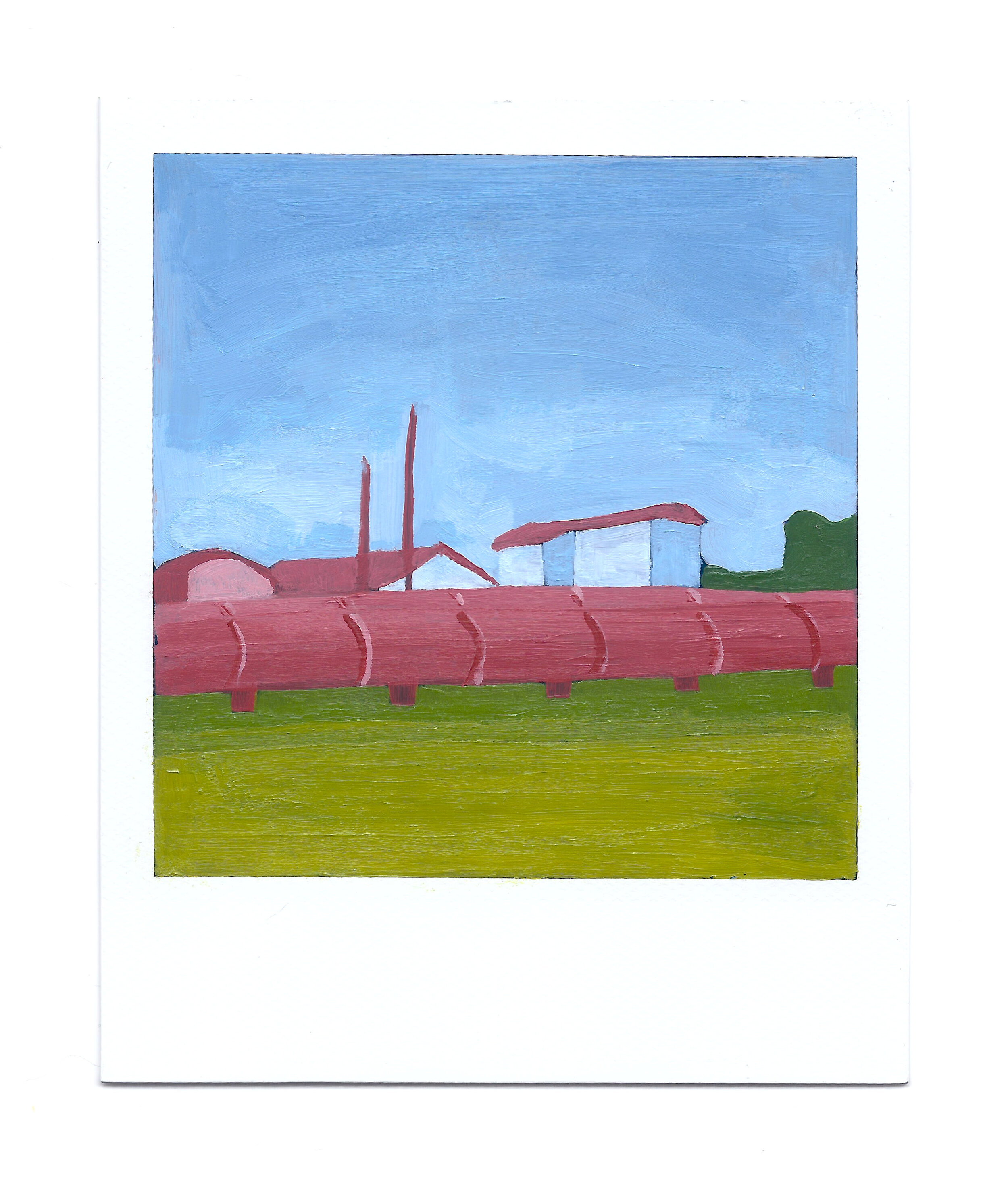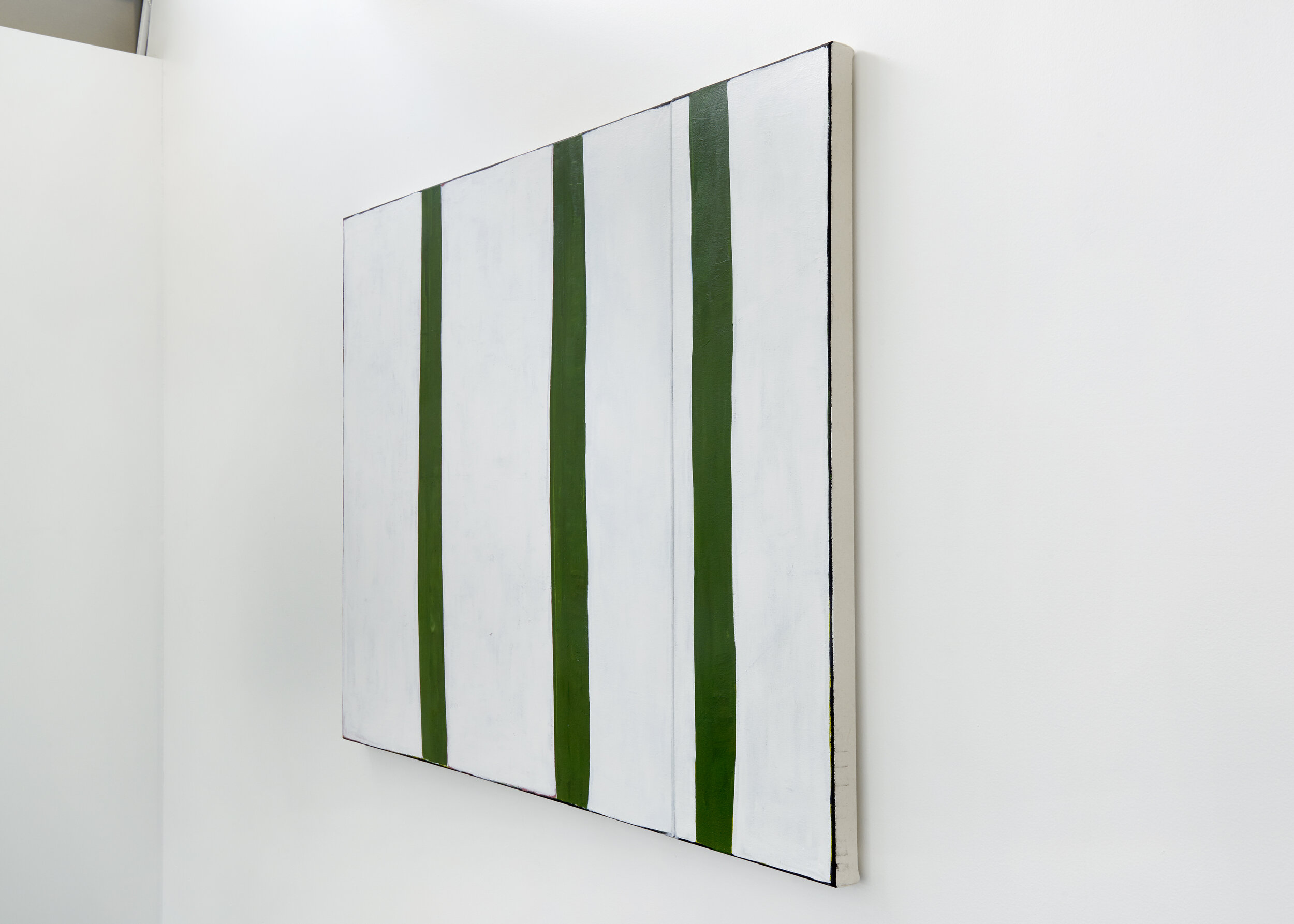Three houses down
Peacock Gallery, Auburn, 4 July - 1 August 2020
Three Houses Down is a discrete collection of Polaroid-paintings and works on canvas of the water pipeline that runs over Darug land from Prospect Reservoir east to Potts Hill. An engineering feat of the Upper Nepean Scheme, the overland pipeline is significant to the collective past and present of this neighbourhood. Pipelines which once saved Sydney from drought were built over unceded land fiercely defended by Pemulwuy and his clan. Wild dogs have been replaced by street cats. The smell of Arabic food fills the air. Stories continue to accumulate along pipeline walking paths with sightlines to connect us to a vast suburban landscape.
Three houses down, 2020, Peacock Gallery, installation view, photo by Ellen Dahl
Three houses down, 2020, Peacock Gallery, installation view, photo by Ellen Dahl
The Pipeline (facing west), 2020, acrylic on canvas, 101 x 132cm, photo by Docqument
Three houses down, 2020, Peacock Gallery, installation view, photo by Ellen Dahl
The Pipeline Polaroids (three houses down 1-20) 2020, acrylic on polaroid photograph, 9x11cm
Notes on Suburbia
A response to Hayley Megan French’s The Pipeline
by Felicity Castagna
If the photograph, as Susan Sontag claims, is note taking form, then these images are notes on suburbia. Suburbia not just as a place but as a way of thinking and living, a lens through which we can see the world and understand our place within it - suburbia as a possibility. They say here, on the outskirts of cities, people’s lives are written in fibro and red brick and pressed cardboard walls. Here, on any street you can look to the past, present and future all in this one space, on this same stretch of road where kids play in the room behind the corner store and a yacht sits stranded in someone’s yard. A lowered Honda skids and floats down the concrete. A goat somewhere. An Arabic love song escapes through a window. The pipelines stretch themselves over the land of the Bidjigal clan and hum.
Read the full essay here.
Three houses down, 2020, Peacock Gallery, installation view, photo by Ellen Dahl
The Pipeline Polaroids (three houses down 1-20) 2020, acrylic on polaroid photograph, 9x11cm
How do you think through the collective past of a suburb? Those Guildford pipelines that still carry water across Sydney are a good start. The three pipelines laid side by side illustrate the advancements in major pipeline construction over a span of some 37 years. Pipeline No. 1 (1888) was constructed from wrought iron, Pipeline No. 2 (1900) from mild steel and Pipeline No. 3 (1925) from electrically welded steel plates. How do you go deeper, beyond that, how do you acknowledge the stories from before it was a suburb, when Indigenous women initiated diplomatic talks with white settlers over food supplies and Pemulwuy led guerrilla attacks against those invaders?
Felicity Castagna, Notes on Suburbia
Three houses down, 2020, Peacock Gallery, installation view, photo by Ellen Dahl
Three houses down, 2020, Peacock Gallery, installation view, photo by Ellen Dahl
The Pipeline (facing north), 2020, acrylic on canvas, 101 x 303cm, installation view, photo by Ellen Dahl
Three houses down, 2020, Peacock Gallery, installation view, photo by Ellen Dahl





